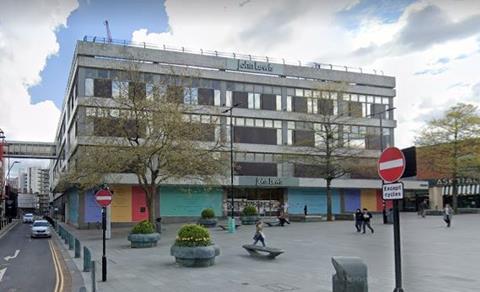Probe emerges as post-war John Lewis branch gets grade II listing and campaigners gear up for M&S fight

Historic England has confirmed it is planning a programme of “thematic research” on department store heritage, following a wave of store closures in recent months and work by campaign groups on the issue.
The plans emerged as the 1960s Cole Brothers department store in Sheffield, designed by Yorke, Rosenberg & Mardall, was awarded grade II listed status by the Department for Digital, Culture, Media and Sport, on the recommendation of Historic England. The now-empty store faces grade II* listed Sheffield City Hall.
The government heritage adviser said the store, which was home to a branch of John Lewis until last year, was “a rare example of a post-war department store – designed by a leading mid-C20 firm of architects – with clean, crisp Modernist lines and a sophisticated layout for shoppers”.
Historic England said the building ”stood out from the crowd and contributed to the city of Sheffield’s vision for a vibrant new environment for its residents”.
YRM’s work includes St Thomas’s Hospital in London, Gatwick Airport and Manchester Magistrates Court.
The Twentieth Century Society, which has been campaigning to get the Cole Brothers/John Lewis store listed for 20 years, said the unity of the building” was emphasised by the strict geometry of YRM’s signature uncut, white-glazed tiles.
The society also welcomed Historic England’s proposed thematic review of department stores, which it described as “long overdue”. It has previously expressed hopes that a formal review of the department store as a distinct building type could see a number of the best examples nationwide listed at the same time.
Building Design asked Historic England for more details of its thematic review. A spokesperson said the workstream was at an early stage. “We are considering some thematic research,” they said.

Earlier this year the C20 Society published statistics suggesting that 52% of the department stores that were open in the UK in 2015 had subsequently closed.
It has asked members to report local examples at risk so that a database can be built. The society has also sought to flag innovative ways that department-store buildings have been repurposed – such as the Johnnie Walker Experience in Edinburgh, created in the former Princes Street branch of House of Fraser. Another example is the University of Gloucestershire’s plans to turn a 1960s former branch of Debenhams into its city-centre campus.
In April, campaign group Save Britain’s Heritage warned that the nation’s department stores could suffer the same “loss of relevance” as stately homes and churches if preventative action was not taken.
It said some 237 department store buildings were listed as vacant as of last summer.
Executive president Marcus Binney said there was a race against time to assess the “proud” and “grandly proportioned” buildings before developers either converted them to residential use or razed them to the ground.
“What is astonishing is the speed with which these handsome and dominating buildings, the pride of cities and prosperous towns, have been closing,” he said.

Save is currently vociferously challenging retail giant Marks & Spencer’s plans to demolish its flagship branch on London’s Oxford Street for replacement with a mixed-use Pilbrow & Partners scheme.
It has now passed the half-way stage in its bid to crowdfund £20,000 towards its legal costs at the public inquiry into the proposals, which is due to take place in October.
















No comments yet